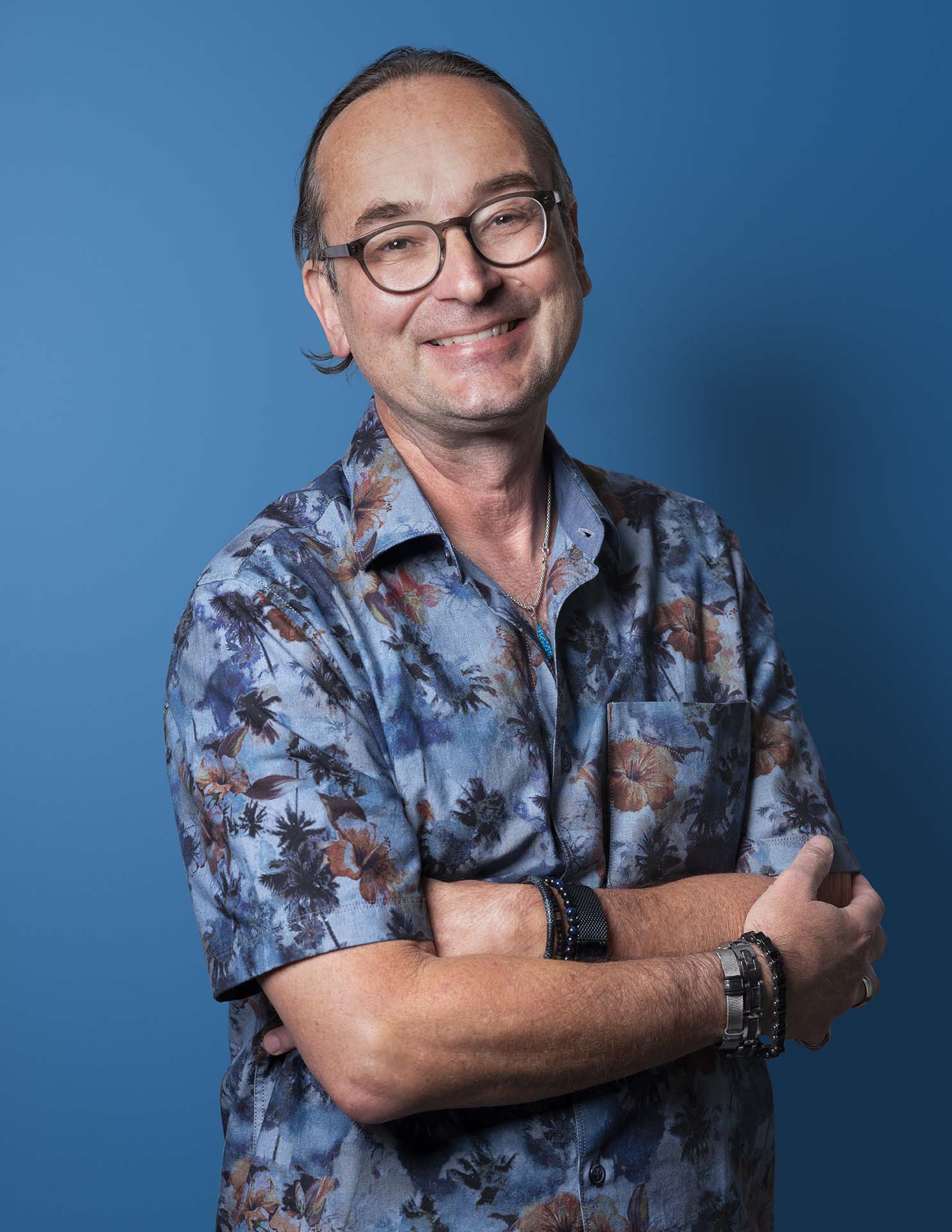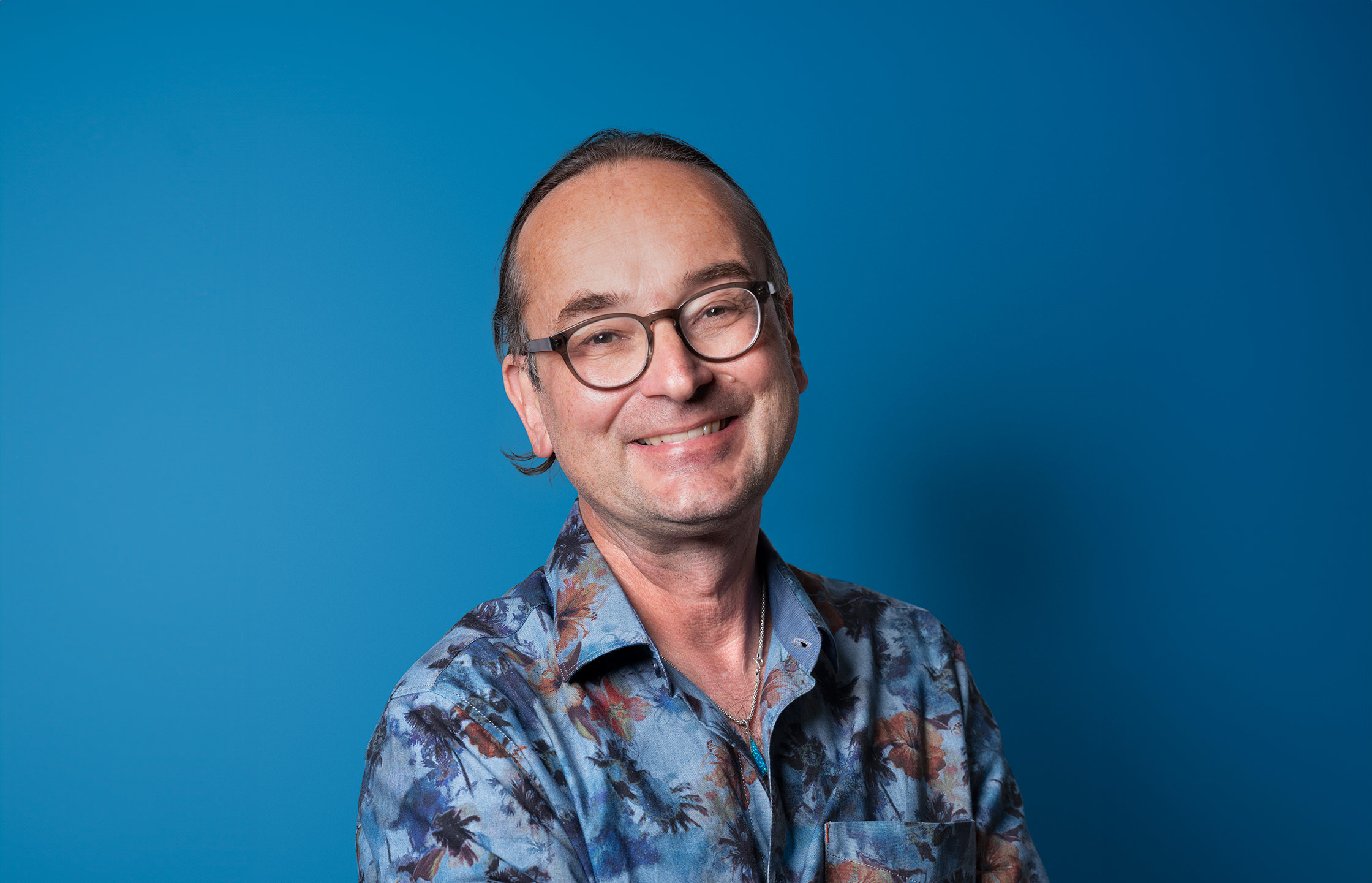Dr. Matthias von Herrath
The new scientific director of the Diabetes Research Institute shares his vision for preventing and curing Type 1 diabetes
By Ana Veciana-Suarez
Photography by Peter Freed

Matthias von Herrath, M.D., is the new scientific director of the Diabetes Research Institute
M
atthias von Herrath, M.D., one of the world’s leading diabetes experts, was appointed the new scientific director of the Diabetes Research Institute at the Miller School earlier this year. He brings a wealth of experience to the renowned institute at a time when researchers are developing a deeper understanding of the complicated pathogenesis of Type 1 diabetes. Dr. von Herrath is optimistic that this growing body of knowledge will help scientists find ways to restore natural insulin production in people with Type 1 diabetes, which afflicts 1.9 million people in the United States and 8.4 million worldwide.
Dr. von Herrath comes to the Miller School from the La Jolla Institute for Immunology in San Diego. Twice named the “#1 Juvenile Diabetes Expert” by Expertscape, he has been recognized with numerous awards, including the American Diabetes Association’s Outstanding Scientific Achievement Award in 2008, the German Diabetes Society’s Langerhans Award in 2014, and a lifetime achievement award from the Network for Pancreatic Organ Donors with Diabetes (nPOD) in 2018.
How and why did you get into this kind of research?
I do not personally have Type 1 diabetes, but like many people, I have family members who do, and I know it is not easy. I had some losses very early in my life, too. I lost my father early, and I went into medical research because I really wanted to make a difference.
What attracted you to the Diabetes Research Institute?
The DRI is the only institute in the U.S., and probably in the world, that is taking a comprehensive approach to tackling Type 1 diabetes — to either preventing it or finding a cure for patients. It’s just an amazing place, not only because of the faculty’s scientific knowledge and breadth of research, but also because of the overall collaborative atmosphere at the institute. Everyone puts collective success over a single person’s achievement, so it’s really a unique place in that respect.
What is your top priority at DRI?
We have several priorities, and they are based on progress in the science that we have seen recently. For example, it was recently shown in trials we were involved in that beta cells — islets — can be generated from stem cells, and they can function in humans. As the patients receiving these stem cell-derived islets still need systemic immune suppression, the DRI’s key focus will be to create and test more tolerable immune therapies that minimize systemic immune suppression. Such therapies can be used in conjunction with novel islet-protective devices as well as immune-evasive islets. Similarly, these better targeted and more tolerable therapies will also be suitable for extending prevention of diabetes in individuals at risk of developing the disease.
How do those priorities relate to the Food and Drug Administration’s approval last year of a first-of-its-kind monoclonal antibody injection that delays the onset of the disease for people ages 8 and older who show early signs of Type 1 diabetes?
Maintenance is one of the main issues that we need to tackle in the future, because anything that systemically lowers our immune system, like the new drug, must be used for a very limited time. After an induction therapy, we need a maintenance therapy specific to the beta cell that produces insulin.
The Diabetes Research Institute Foundation has committed a gift of $50 million over seven years to the institute. What does this mean, and how will it be used?
It’s been a transformative gift and an amazing advance, to say the least. It will do several things. Usually, researchers have to apply for grants, but these grants are limited in duration. This gift will serve as a bridge between grants. The gift also will be used to fund special projects for young investigators. The third thing we’re going to use it for is to catalyze certain transformative projects and then get enough data to solicit additional donations for things that neither the pharma industry nor academic grants fully cover.
“The DRI is the only institute in the U.S., and probably in the world, that is taking a comprehensive approach to tackling Type 1 diabetes.”
There are many gaps in these translational enterprises. This gift will make a tremendous difference because it will fund projects that the pharma industry, biotech or the National Institutes of Health can’t fund singlehandedly. That’s why this gift is so important.
What other developments are taking place in Type 1 diabetes research?
This is a very exciting time, and a lot of things are coming together. For the first time, we can offer patients some solutions. We can see the light at the end of the tunnel, where we will hopefully emerge with improved immunotherapies that will allow islet replacement as prevention. Also, work with human mini organs is a very new and interesting avenue for understanding human disease, and we will try to continue their development. I think they will eventually replace some of the animal models. The ability to grow many human organs will become an additional tool, and it will be used for several diseases. You can envision the ability, if someone has cancer, to make a mini cancer and then see what immune cells best detect that cancer. Or if you want to build a vaccine, you make your personal mini lymph node, and you see whether there is a response to the vaccine.
If you would like to contribute to the Diabetes Research Institute, please visit diabetesresearch.org/give.
Click here for more on the Diabetes Research Institute Foundation’s commitment. ![]()



